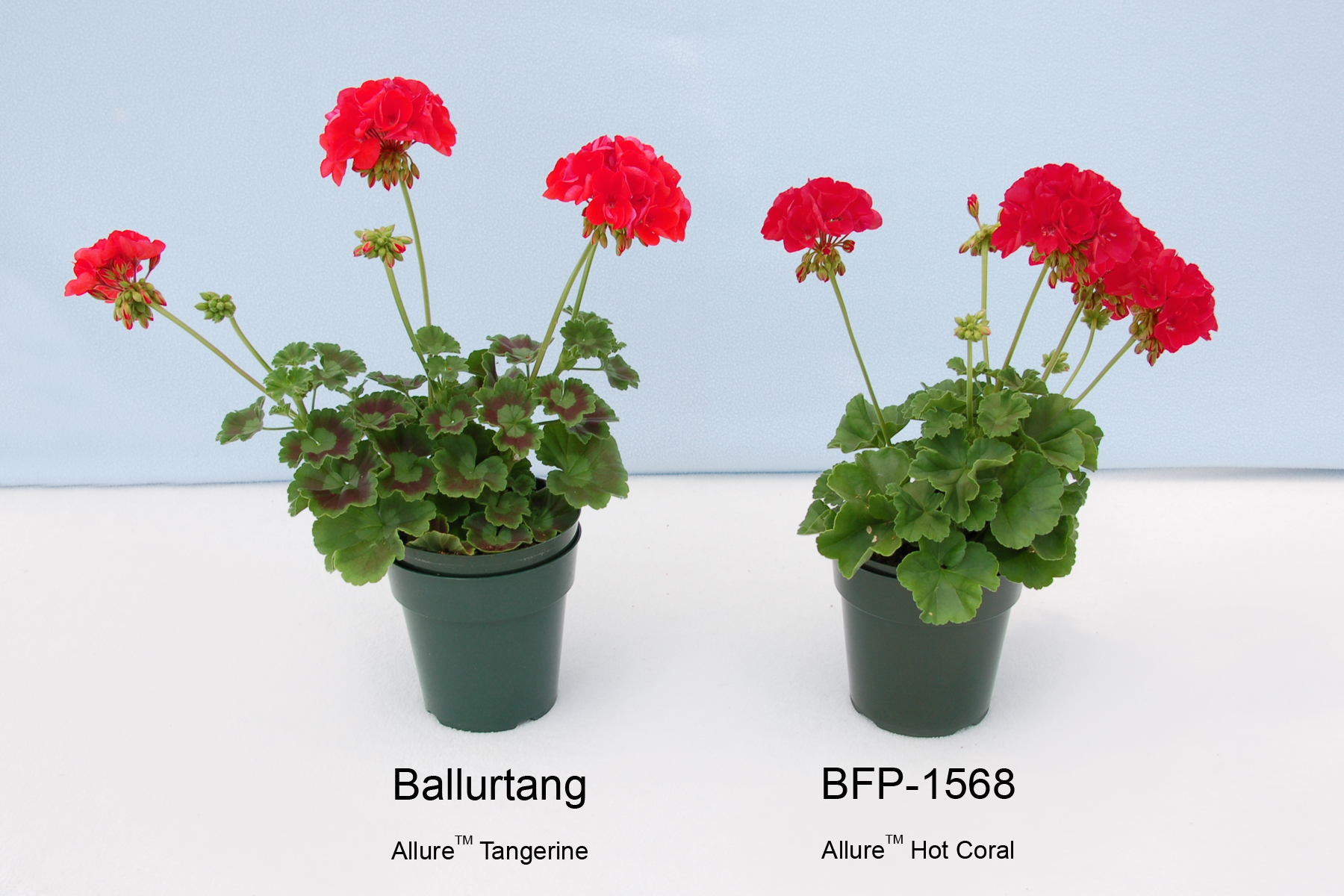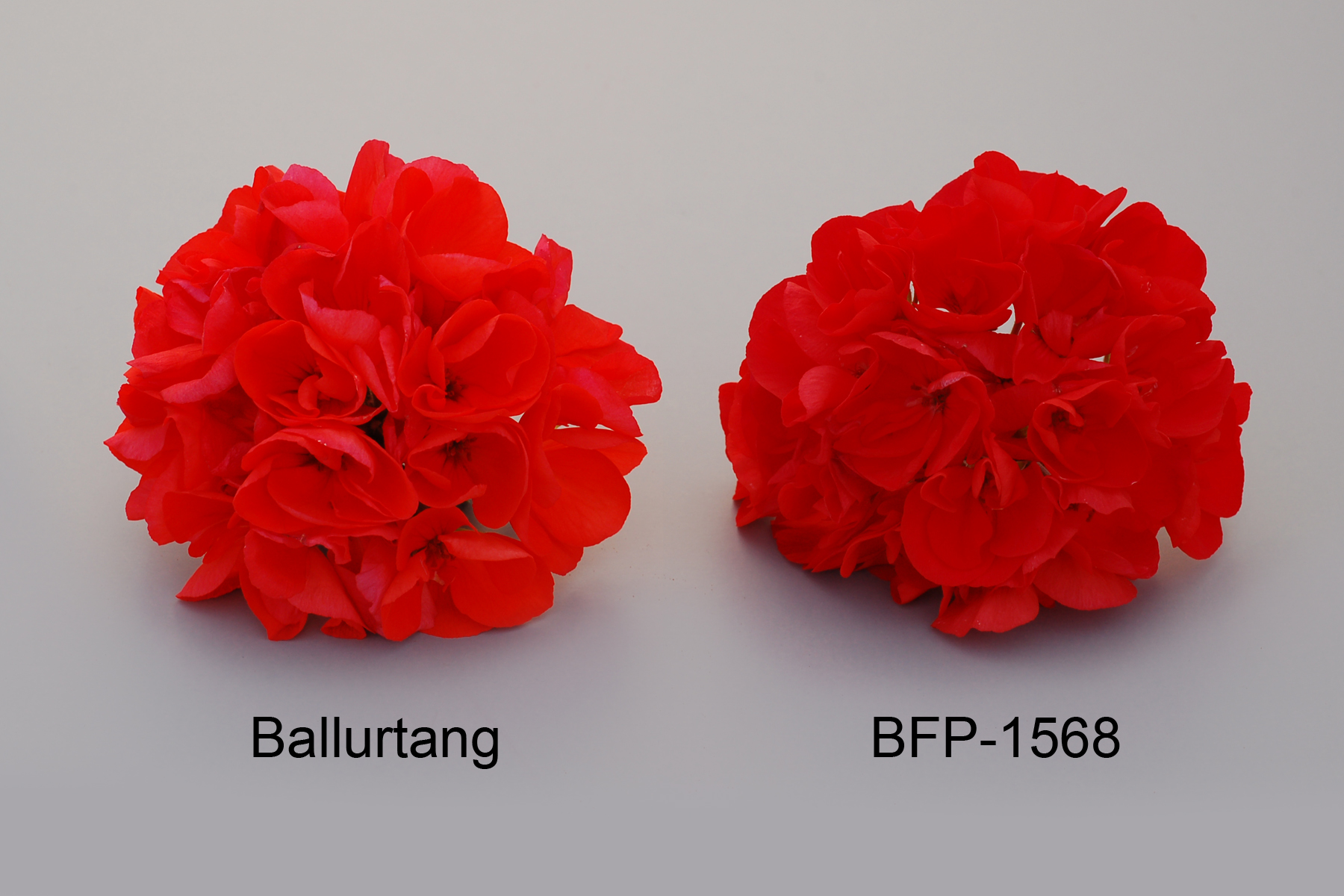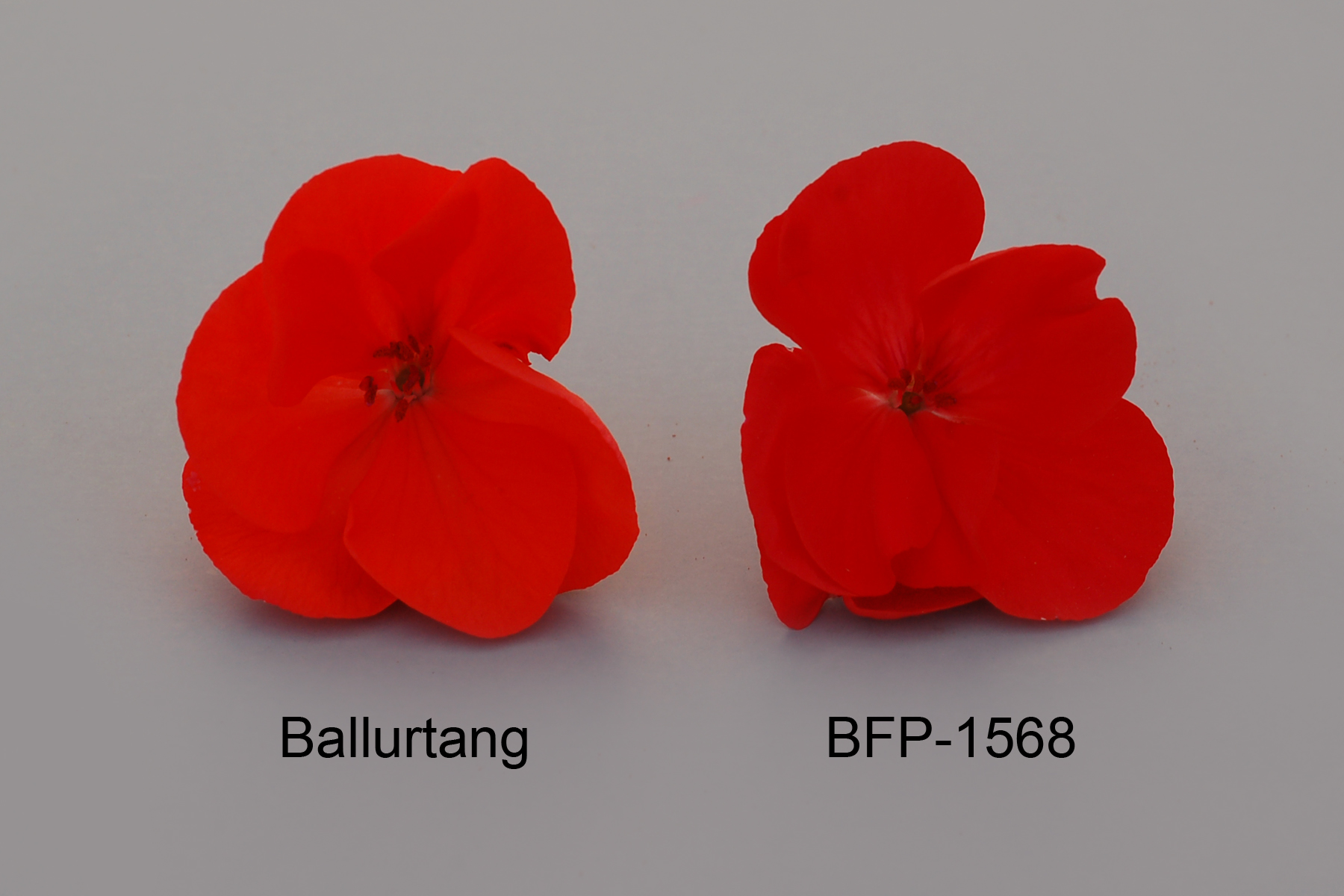Ballurtang
| Denomination: | 'Ballurtang' |
|---|---|
| Trade name: | Allure Tangerine |
| Botanical Name: | Pelargonium ×hortorum |
| Applicant/Holder: |
Ball Horticultural Company 622 Town Road West Chicago, Illinois 60185 United States of America |
| Breeder: |
Frank Silze, Silze GmbH & Co. KG, Weener, Germany |
| Agent in Canada: |
BioFlora Inc. 38723 Fingal Line R.R. #1 St. Thomas, Ontario N5P 3S5 Canada Tel: 519-317-7511 |
| Application Date: | 2006-03-09 |
| Application Number: | 06-5293 |
| Grant of Rights Date: | 2008-09-29 |
| Certificate Number: | 3353 |
| Date rights surrendered: | 2012-09-27 |
Variety Description
Variety used for comparison: 'BFP-1568' (Allure Hot Coral)
Summary: The leaves of the variety 'Ballurtang' have a strong, reddish brown zone, whereas the leaves of the reference variety 'BFP-1568' have a weak, green zone. The two varieties differ slightly in flower colour and the colour of the upper petal markings.
Description:
PLANT: upright growth habit, medium height, medium to broad width, few branches
STEM: green, medium thickness, dense pubescence
LEAF BLADE: medium length, medium width, open to closed base
LEAF MARGIN: bicrenate, moderate lobing, shallow incisions, moderate waviness
UPPER SIDE OF BLADE: medium to dark green, dense pubescence, no variegation
LEAF ZONE: strongly conspicuous, normal position, reddish brown
PETIOLE: short, dense pubescence
INFLORESCENCE: few to medium number per plant, orange group, medium diameter
PEDUNCLE: medium to long, dense pubescence, absent or very weak anthocyanin colouration
FLORET: single, narrow elliptic to elliptic bud, overlapping petals, entire petal margin
UPPER PETAL: orange red, very weakly conspicuous striped markings, very small white basal zone
LOWER PETAL: orange red, no markings, very small white basal zone
PEDICEL: short to medium length, dense pubescence, dark red in middle third, no swelling
SEPAL: dense pubescence, green with red streaks
Origin & Breeding History: The variety 'Ballurtang' originated from a cross conducted during the summer of 1999 in Weener, Germany, as part of a controlled breeding program. The female parent was the variety 'SIL Aurora', characterised by its semi-double flower form, medium orange flower colour, medium green leaf colour with strong zonation and very compact, upright and rounded growth habit. The male parent was 'Genor', GEN Tamara, characterised by its semi-double flower form, dark cardinal red flower colour, medium green leaf colour and upright growth habit. The initial selection took place in May, 2000 and was based on the unique flower colour, early flowering and zoned foliage.
Tests & Trials: Trials for 'Ballurtang' were conducted in a polyhouse during the spring/summer of 2007 at St. Thomas, Ontario. The trial included 15 plants of the candidate and reference varieties. All plants were grown from rooted cuttings, planted into 15cm pots on May 8, 2007. Observations and measurements were taken from 10 plants of each variety on July 11, 2007. All colour determinations were made using the 2001 Royal Horticultural Society (RHS) Colour Chart.
Comparison tables for 'Ballurtang' with reference variety 'BFP-1568'
Colour of upper petal (RHS)
| 'Ballurtang' | 'BFP-1568' | |
|---|---|---|
| upper side - margin | more orange than 40A | more orange than 43A |
| upper side - middle | more orange than 40A | close to N57B |
| upper side - base | 40C | 43C |
| lower side | 40B-C | 43B-C |
Colour of lower petal (RHS)
| 'Ballurtang' | 'BFP-1568' | |
|---|---|---|
| upper side - margin | more orange than 40A | more orange than 43A |
| upper side - middle | more orange than 40A | more orange than 43A |
| lower side | close to 40C | 43B-C |
Colour of petal marking (RHS)
| 'Ballurtang' | 'BFP-1568' | |
|---|---|---|
| upper petal | N30A | 60C |
Click on image for larger view

Pelargonium: 'Ballurtang' (left) with reference variety 'BFP-1568' (right)
Click on image for larger view

Pelargonium: 'Ballurtang' (left) with reference variety 'BFP-1568' (right)
Click on image for larger view

Pelargonium: 'Ballurtang' (left) with reference variety 'BFP-1568' (right)
- Date modified: